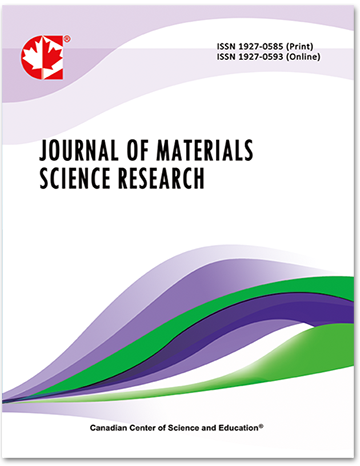Mechanical Performance of Hybrid Graphene Nanoplates, Fly-Ash, Cement, Silica, and Sand Particles Filled Cross-Ply Carbon Fibre Woven Fabric Reinforced Epoxy Polymer Composites Beam and Column
- Till Quadflieg
- Vijay K. Srivastava
- Thomas Gries
- Shantanu Bhatt
Abstract
The main goal of this study is to reduce the brittleness of a fibre-reinforced cement base structure when exposed to the effects of graphene nanoplates, fly ash, silica, sand, and cement fillers to better understand the effect of hybrid nano/micro particle fillers on the mechanical performance of cross-ply carbon fibre reinforced epoxy resin composites. A three-point bending test through the width was used to measure flexural strength. The impact tests Izod at low impact velocity and Charpy through the thickness were used to determine the dynamic fracture strengths of pre-cracked and non-cracked composite samples. Also, the compressive test method was used to measure the compressive strength of hybrid particles and short glass fibre-reinforced epoxy resin composite square and circular columns. The results show compressive strength and flexural strength. Izod impact energy, Charpy impact energy, and dynamic fracture toughness of hybrid nano/microparticle-filled fibre composites have higher values than virgin fibre composites due to the influence of graphene nanoparticles and perfect interface bonding between two dissimilar molecules of nano and microparticles, which improve the fracture toughness and absorb impact energy. Overall, the results indicate that molecules of nano/microparticle-filled carbon fibre and glass fibre-reinforced epoxy resin composites can be used in aggressive environments because of the improved mechanical properties in comparison to the virgin fibre composites. In addition, SEM micrographs clearly indicate that nano- and microparticles are resistant crack propagation and deboned of matrix fibres.
- Full Text:
 PDF
PDF
- DOI:10.5539/jmsr.v12n1p22
Journal Metrics
Impact Factor 2022 (by WJCI): 0.583
Google-based Impact Factor (2021): 0.52
h-index (December 2021): 22
i10-index (December 2021): 74
h5-index (December 2021): N/A
h5-median (December 2021): N/A
Index
- CAS (American Chemical Society)
- CNKI Scholar
- Elektronische Zeitschriftenbibliothek (EZB)
- EuroPub Database
- Excellence in Research for Australia (ERA)
- Google Scholar
- Infotrieve
- JournalTOCs
- LOCKSS
- NewJour
- PKP Open Archives Harvester
- Qualis/CAPES
- SHERPA/RoMEO
- Standard Periodical Directory
- Universe Digital Library
- WJCI Report
- WorldCat
Contact
- John MartinEditorial Assistant
- jmsr@ccsenet.org
